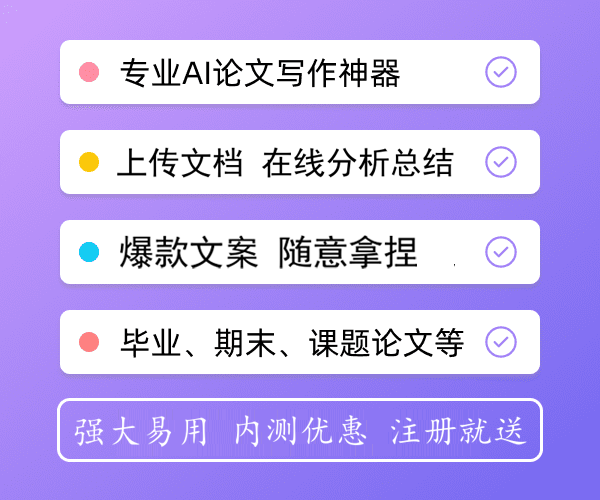outline免费密钥分享【精选】
下面是好好范文网小编收集整理的outline免费密钥分享【精选】,仅供参考,欢迎大家阅读!

毕业论文,大多都是从一个研究问题开始的,之后就是做研究,做大纲,填充内容。
Chapter I.
INTRODUCTION.
A. Broad introduction to thesis topic and method. Page or two. Write after remainder of proposal is completed.
B. Research problem. State broadly, in question form. Give sub-questions. Explain carefully. In one sense, usually the problem is to expand the body of knowledge examined in the literature review.
C. Need for the research. Who will benefit? Discuss applied and scientific contributions.
D. Nominal definitions. Define central terms.
E. Context. Add further info to clarify the research problem.
在这一章要明确说明你的研究目的、研究意义。讨论该研究对该领域的理论知识体系有哪些益处,以及本研究对本领域正在研究的科研人员有哪些实践意义。
如果是博士论文的话,还必须解释研究对该学科知识体系有哪些贡献,同时也要探讨对大众传播的重要性。
需要注意的是,这一章要认真写。如果没有明确的目的和强大的理论基础,论文从一开始就会存在根本性的缺陷。
Chapter II.
THEORY.
Literature review. Organize by idea; avoid stringing together abstracts of articles.
A. Overview. Theoretical foundations.
B. Literature. Group articles by ideas. For a given idea, first discuss common strands in the literature, then departures.
C. Model. Of a process, usually. Based on the lit reviewed.
D. Hypotheses (in broad sense of the term; also called Propositions). For each, give brief restatement of justification tied to earlier sections; explain derivation and implications. Include assumptions. Explicitly state plausible rival hypotheses (explanations of process) of a substantive nature.
E. Scope of the study. Theoretical assumptions; discuss limitations they impose.
综述的目的在于提出一些理论框架,然后在本章中进一步解释。
因此,文献综述要描述并分析该主题的以往研究。 但本章不应仅仅时是将其他研究人员的发现串在一起。
而是要讨论和分析知识体系,最终目标是确定关于该主题的已知和未知。
Chapter III.
METHODS. Outline in a few pages.
A. Introduction. General description of method and design.
B. Design. Experiment, quasi-experiment, survey, and so forth. Detailed description.
C. Sample. Universe, population, element, sample design, tolerance, probability.
D. Measurement. Operational definitions. Include, as applicable, detailed discussion of indexes/ scales. Specify methods used to assess validity and reliability.
E. Analysis. Techniques to be used; justification. Nature of relationships expected (e.g., asymmetrical, symmetrical, reciprocal; linear, monotonic, other curvilinear; necessary, sufficient, necessary and sufficient). Include dummy tables and worked examples of statistics.
F. Validity. Design: Internal and external, with relevant subtypes.
G. Methodological assumptions. Discuss limitations they impose.
APPENDICES.
A. Schedule. In Gantt Chart form.
B. Facilities. Faculty and staff expertise, library and computer resources, other special facilities contributing to a successful study.
C. Budget. D. Bibliographic essay. Sources searched (indexes, abstracts, bibliographies, etc.). Strengths and weaknesses of literature.
BIBLIOGRAPHY. Works cited in proposal, plus other relevant documents.
本章描述并论证了所采用的研究方法论,以及概述如何分析的。
首先描述方法,然后回答“为什么这种方法是最合适的”这个问题。在这时,你可以引用关于这个方法的参考文献。接下来详细说明数据收集和分析过程的各个步骤。
虽然方法和分析技术各不相同,但通常都是为了解决以下这几个维度:
description of research design
internal validity
external validity
description of population and description of and justification for type of sample used or method for selecting units of observation
development of instrument or method for making observations (e.g., question guide, categories for content analysis)
pre-test
reliability and validity of instrument or method
administration of instrument ormethod for making observations (e.g., interviews, observation, content analysis)
coding of data
description of data analysis
statistical analysis and tests performed
identification of themes/categories (qualitative or historical research)
Chapter IV.
FINDINGS.
A. Brief overview.
B. Results of application of method; any unusual situations encountered. Nature of sample.
C. Descriptive analysis. One-way frequency distributions on central variables.
D. Validity/reliability analysis.
E. Tests of hypotheses. ANOVAs, crosstabulations, correlations, and such, depending on techniques used; give in same order as hypotheses.
本章介绍数据分析的结果。不讨论你的发现以及其它含义。
首先概述任何描述性或探索性/确认性分析(例如,可靠性测试,因子分析)。 然后介绍假设检验的结果,再讨论事后分析,善于表格/图形用来说明和总结所有数据。
Chapter V.
DISCUSSION.
When discussing implications, deal with both the theoretical and the practical. Present only interpretations of the findings, not opinion.
A. Brief overview.
B. Discussion of results of application of method. Implications.
C. Discussion of descriptive analysis. Implications.
D. Discussion of tests of hypothesis. Implications.
E. Post-hoc analysis. Implications.
Chapter VI.
CONCLUSION. May include writer's opinion.
A. Summary of entire thesis in a few pages.
B. Conclusions. Refer to lit review.
C. Implications. Speculate about broadest possible consequences, both theoretical and practical. Label speculation clearly.
D. Limitations. Theory, method.
E. Suggestions for future research.
APPENDICES.
Bibliographic essay. Questionnaire and coding manual, if any. Raw data.
BIBLIOGRAPHY.
Include all relevant sources examined, whether cited or not.
本章不仅仅是为了重申你的发现,而是要讨论你的发现在该领域的理论知识体系中意味着什么。
首先讨论该发现与综述中的理论框架的关联。在一些情况下,你可能还需要引入新的文献(主要是定性研究)。
然后说明你的发现对于正在研究该领域的科研工作者有什么帮助意义。
简单点说就是,该研究的实际意义是什么?博士应讨论该研究的教学意义。以及对大众传播有什么启示?最后以一个简短的结论以及结尾句结束





